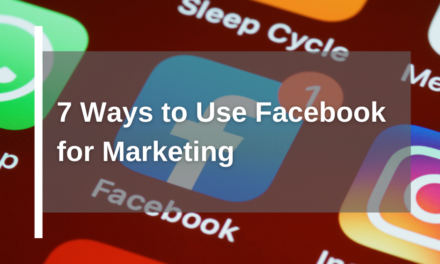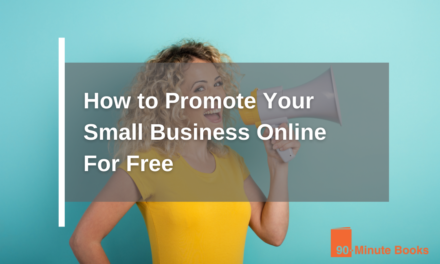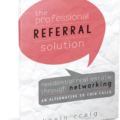Gaining potential customers or “prospects” for your company is not a simple process. There’s a whole strategy involved, for one thing. Determine who you want to reach, promote your trademark successfully, and produce useful and appealing material for the specific population you are aiming for.
It is imperative to keep up with the changing demands of the customers, meaning that you must regularly modify your approach to meet their expectations. As a marketer or business owner, you should not rely on strategies such as cold-calling and buying leads that are unnecessary and old-fashioned. You must have reliable, successful methods to attract potential customers in a more competitive digital arena.
Here are some methods for generating more potential customers that will help you increase your business.
How Lead Generation Works
If you are unaware of lead generation, it is easy to understand.
The process of lead generation is an umbrella term that encompasses the methods and tactics used to identify new buyers interested in your business. The lead generation process can be split into two sections.
First, you must bring people to your website or social media page. You have multiple options to accomplish this task, such as spending money on Google Ads or promoting your hashtags on different social media platforms.
Then, you must try to persuade these guests to give you some of their contact information, for example, an email address or phone number. Once you provide the marketing staff with their contact information, you can contact them and, with some luck, have them be buyers at the closing of the sales process.
Are you wanting to get a maximum amount of leads? Well, sure, but only within reason.
Put this way, it could be suggested that even with 1,000 leads, just two of them could ultimately become paying clients. Perhaps instead, you could concentrate on launching an excellent marketing initiative that results in 20 leads, of which eight become paying clients.
Rather than investing in approaches that do not provide considerable returns, like paying for leads, shift your attention to generating leads organically. Considering that, let me demonstrate how to acquire better quality leads rather than those that will not produce results.
5 Ways to Gain More Leads for Your Business
Exploring different options to identify fresh leads and familiarize people with your organization is crucial. It is possible that what is effective for one organization may not be successful for another, depending on their specific industry and goals.
These five strategies can be useful for businesses, regardless of their industry, to begin finding potential leads.

FREE BOOK
Discover the 5 Compelling Book Titles Types that create an ‘I Want That…’ response.
1. A/B Test Your CTAs
A call-to-action (CTA) is a phrase that encourages someone to do something. Examples of actions you might want your visitors to take include:
- signing up for a newsletter
- downloading a free product demo
- scheduling a call
- subscribing to a newsletter
- using a discount code
CTAs are essential for bringing potential customers into their sales funnel, so they must be accurate. The calls to action associated with your organization should be comprehensible, emotional, and concise and include powerful words that evoke movement. A picture or graphic could be included depending on who is being addressed.
Consider inquiring yourself when the last time you experimented with the success rate of your CTAs. Do not fret if your response is “never,” as you can still correct it.
It all comes down to A/B testing.
A/B testing, or split testing, enables you to measure the performance of different variations of a marketing tool, such as a CTA button, to find out what works better. Using the instance referenced, you might alter the phrase “Get the guide,” or you could place the button after the blog post instead of in the middle of the article.
Once you determine which variation is the most successful, you can quickly create more prospects. Use Google Analytics and my A/B experimentation estimator to ascertain your outcomes.
2. Use User-Generated Content (UGC)
Content developed by individuals instead of organizations is what user-generated content is all about. UGC can be anything, such as:
- product reviews
- videos
- images or graphics
- audio
- articles or posts
UGC is marketing gold. Consider it this way: You did not have to pay for this material. It’s essentially free marketing for your brand. In addition, it was produced by genuine individuals who are so enthusiastic about your product that they are willing to share it with others. User Generated Content (UGC) assists in developing the believability and trustworthiness of your business on the internet.
Want to use UGC for lead generation? If your business or product evaluations are usually favorable, share these reviews on your webpage to develop a strong reputation and motivate guests to purchase.
Utilizing User Generated Content can assist your brand in gaining attention on social media. For example, you might link to promotional videos of your item or post photos of people using it (with their consent, of course.)
Do not be scared to think of inventive approaches to include user-generated content in your company’s image!
3. Host a Training Webinar
Attending a training webinar is a great chance to display your expertise and past knowledge. It appears that you are ready to provide the knowledge at no cost, creating a feeling of reliability for your business.
Presenting virtual seminars can be beneficial for both businesses-to-businesses and businesses-to-customers, depending on the sector you are aiming to target. An illustration of this; if you offer software to smaller companies as a B2B organization, perhaps you should demonstrate the product. If you are a business that sells cosmetic products to customers, you may host an online seminar on how to use your items effectively.
No matter if you are in retail or business-to-business marketing, the essential approaches for utilizing instructional webinars for producing leads are the same.
First, advertise your webinar effectively. This could involve pushing your webinar on LinkedIn or discussing it on social media.
Subsequently, ensure you get info from people interested in your proposal, such as their email contact. This information can be used to stay in touch with those who joined the webinar and lead them through the sales process.
In addition, you should deploy potent call-to-actions to urge individuals to sign up for your bulletin or pursue your social media accounts concurrently. A webinar can be a valuable asset in publicizing your product and building your reputation, so take advantage of it.
Be sure to allow people to engage in further dialogue by inviting them to put forth any questions they may have after the webinar or schedule a conversation later.
4. Send effective emails
It is widely accepted that email is the most common way of creating leads, and it is understandable why. You can get a tremendous ROI of 3,800% when you spend $1 on email, which yields $38. People prefer this form of contact when dealing with companies, making it perfect for initial contact and aftercare.
Here are some time-tested techniques for a better sales email:
Fascinate your reader: According to investigations, an astonishing 47% of email sendees open up a message just by looking at the subject heading! Giving your email a captivating title is the first step. Pose an intellectual inquiry, provide a shocking statistic or anything that serves as a reminder to the reader of an issue they have that you can help to solve. Start your email with captivating information about the challenge or opportunity to ensure the reader’s full attention.
Customize your communication: Your communication should never be generic, as emails with a personalized touch are 5.7 times more likely to create sales.
Use the potential customer’s name in the topic and/or during the introduction of the email. You could also bring attention to their activities, requirements or successes (for instance, “I was totally entertained by your latest social media post…” or “I congratulate you on your most recent event.”)
Assess the person getting the email, the number of words, and the right moment to send it. Investigate thoroughly and attempt to contact the individuals who make the decisions for the company when crafting your email. In certain scenarios, a concise email can help open up a new opportunity. However, research suggests that emails in the 300-word range often receive more productive feedback than emails under 100 words. Do not overlook that you will likely have more good fortune if you recognize the right time to send an email, such as after a change in leadership, the introduction of a product, or after a company attains financial aid.
Include significant worth in every email you send to ensure it does not go into the junk folder. Include relevant items, useful assets, and advice tailored to the potential customer’s requirements. I looked at your latest blog entry and thought of this article which delves into the same topic. I thought it might be helpful to you. Let me know what you think.”
Ensure your contact information is prominently displayed and easily identifiable so your prospects can easily get in touch with you. Include a clear call-to-action such as a link, button or phone number that stands out. Explain the following actions: arranging a demonstration, replying to the email, or having an informal call.
5. Leverage social media
Many businesses recognize the power of social media for constructing a strong image, but it is also an effective means of producing leads. The immense quantity of data contributed by social media users combined with the millions of users on such websites as Facebook, Instagram, Twitter, LinkedIn, and YouTube makes this possible. Here are some ways to attract new leads:
- Host a live event featuring notable speakers, like a Q&A, Ask Me Anything, or Twitter chat.
- Run polls or surveys that ask about a pain point or relevant topic.
- Share gated content, like an e-book or infographic.
- Try a giveaway or contest with a donated prize to increase your profile’s reach.
- Incentivize leads with a free tool, research report, or discount code.
- Create a testimonial video that shows how your product has helped other people.
Employ automation tools for social media to plan out when posts should be published and acquire leads without effort.
Remember that originality reigns supreme when crafting your posts and quality is vital. Videos of customer testimonials should be given high consideration since Wyzowl’s research shows that two-thirds of people are more likely to purchase after viewing a video that illustrates how a certain item has benefits people similar to them.
Finally, don’t forget to take advantage of social listening. Examine posts on social media platforms concerning your item and those of your rivals to observe what individuals are commenting. You can gain insight into ways to better your product or advertising strategies by looking into conversations on social media.
You can also post your remarks on social media to gain leads without spending any money. If you find out about a competitor’s product that someone is unsatisfied with, it is a good idea to suggest your product as an alternative and describe how it will better meet their requirements.
6. Improve your Aesthetic
Your website and social media pages are the primary sources of free leads. There is a high demand for good looks online, given the vast number of websites, blogs, and social media pages available. If the number of people leaving your website shortly after arriving is high or the growth of your social media presence is slowing down, consider refreshing your overall design and layout.
Here’s how to make your website more visually appealing:
- Stunning graphics are essential. Update your web design and images accordingly.
- Keep your menu or site navigation clean and easy to use.
- Don’t put too much content or too many images on one page.
- Implement inviting lead capture forms throughout the site.
- Make sure your buttons and other lead-capturing elements really pop.
And here are a couple of tips for boosting your social media aesthetic:
- Consistency is key: Create a color palette and select a few fonts and filters that make a statement suitable to your brand. Use these same elements consistently to build your brand identity on social media.
- Know your audience: When it comes to aesthetics, beauty is in the eye of the beholder. Research some of your successful competitors. What aesthetic do they use, and what appeals to your customers?
7. Partner with an influencer
Influencer marketing displays an example of people’s tendency to trust and imitate the behaviors of individuals they respect. This is commonly referred to as “social proof.” It’s also a rapidly growing lead acquisition channel.
The potential of bringing your brand’s message to your target audience can be realized by utilizing the influence of a respected individual, such as a thought leader, expert, or influencer. In many cases, it can be done in exchange for acknowledgment on social media sites or complimentary products/services.
A faux pas that companies commit is suppressing the influence of the influencer’s individuality or artistry, negatively affecting the most advantageous element – genuineness. Provide your brand and goals with specific instructions, and then let them develop content that reflects their individual style and personality.
It is essential to consider cooperating with a major influencer rather than a minor influencer. A macro-influencer typically boasts a fan base of between 10,000 and 1 million followers, while a micro-influencer usually has between 500 and 10,000 followers.
Although micro-influencers possess much fewer fans than macro-influencers, they could be more economically beneficial to certain companies. Micro-influencers tend to engage with their followers more. The people who support micro-influencers sense a greater bond and fidelity to them, whereas the devotees of macro-influencers can find themselves overwhelmed by the vast number of admirers.
Guest Post Disclaimer
The views expressed in this post do not represent the views of 90-Minute Books. The information has not been verified and should be considered an opinion. You are always advised to do independent research.











